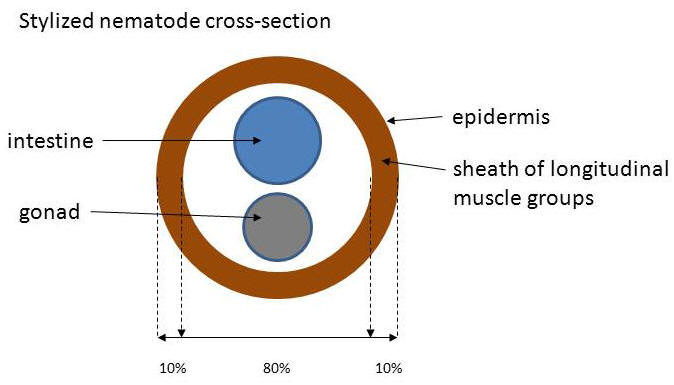
Physiology Calculation - Body Size and Respiratory Gas Exchange
Consider two nematode species, both 1 mm (=1000 μm) long and with the same body diameter. De Man formula parameter a = 30 (initially).; a=body length/body width.
Due to evolutionary forces, both species will increase in mass by 50% but with differing morphology. Species 1 will retain its current diameter and increase only in length; species 2 will retain its current length and increase only in diameter.
The sheath of longitudinal muscles of mesoderm origin, just below the epidermis, has a thickness equal to 10% of the body diameter.
The rate of gaseous exchange between the outside environment and these muscle groups is a function of the ratio of body surface area to volume of the muscle sheath.

You may consider the nematodes as cylindrical in shape.
What is the impact of the increase in body mass on gaseous exchange in the two species? Speculate on the impacts on rate of muscle activity and movement. Be prepared to report to the class at the next lab period.
Suggestions:
Calculate the volume of the muscle sheath and the nematode surface area for the two species before and after the 50% increase in mass. Per Andrássy, 1956, the density of a nematode is 1.084 g/ml (= μg/μl); then density=mass/volume.